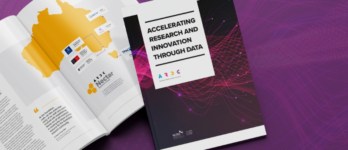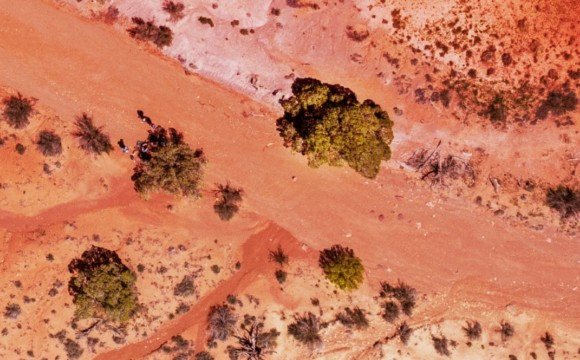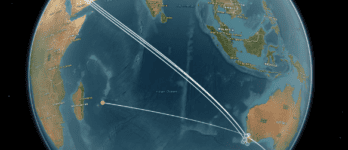
A digital platform that revolutionises how researchers analyse Australia’s history and culture over time has won gold for education services at the 2021 Good Design Awards.
The Time Layered Cultural Map of Australia (TLCMap) is a suite of digital tools that gives humanities and social science (HASS) researchers a unique means of visualising and interrogating historical and cultural data based on spatio-temporal coordinates.
The University of Newcastle led its development with designers The Growth Drivers and Studio Zed, supported by an Australian Research Council Linkage, Infrastructure, Equipment and Facilities grant and $100,000 co-investment from the Australian Research Data Commons (ARDC).
Project leader Emeritus Professor Hugh Craig said the TLCMap platform democratises access to historical and cultural data sets.
“This is a no-code or low-code ‘data fusion’ platform where novice through to highly experienced researchers can analyse and visualise data with minimum programming skills,” he said.
“This is an exciting tool because, for the first time, researchers can view changes in Australian cultural data over time, using deep maps that combine multiple layers of data to visualise new patterns and relationships in complex spatio-temporal and cultural materials.”
Analysis and visualisation made easy
TLCMap is the second iteration of a HASS research tool whose technology-centred interface required advanced digital data skills to access.
Now an entire software ecosystem in one package, the new TLCMap platform caters for the digital mapping needs of the entire HASS sector, including librarians, amateur historians and students.
It connects to a growing number of stand-alone HASS data archives and platforms such as the Historical and Colonial Census Data Archive, AusStage, The Prosecution Project, and national place name authorities.
This allows researchers to access multiple data sources, use pre-existing or custom-made spatio-temporal tools to analyse and visualise data, export results to standard analytics tools, and enrich data sources with spatio-temporal tags.
Emeritus Professor Craig said Australian researchers can now uncover new patterns in their data, answer some long-standing research questions, and communicate their findings with more impact.
“Time-layered maps can reveal hidden patterns in free-form resources like documents, records and images,” he said.
“They are also an intuitive way to present large data sets to other researchers and to the wider public.
“We like to think TLCMap will be an important support to HASS researchers in the movement under way to add insights from structured data to established methods of finding meaning in HASS materials.”
FAIR data with high impact
According to Dr Andrew Treloar, Director of the ARDC’s Platforms program that invested in TLCMap, the project is an exciting example of ensuring research datasets are FAIR – findable, accessible, interoperable and reusable.
“TLCMap equips researchers with tools both to do existing things more quickly than before and to do new things that weren’t previously possible,” he said.
“It makes it much easier to find and access HASS resources that have been made interoperable, and re-use them in innovative ways – an excellent example of how the ARDC is helping Australian researchers get a competitive advantage through their use of data.”
ARDC Humanities, Arts and Social Sciences Program Manager Jenny Fewster said TLCMap would boost the capacity of the HASS sector to produce high-quality research outputs.
“Maps are an incredibly powerful tool for HASS researchers that are useful both as a practice-led research method and as an output for research,” she said.
“Mapping allows HASS researchers to recognise social constructions of place and re-imagine how stories about time and place are told.
“Having ready access to cutting-edge spatio-temporal tools enables more HASS researchers to generate high-impact research outcomes through cartography.”
The TLCMap project team includes experts from:
- University of Newcastle
- Curtin University
- Edith Cowan University
- University of Melbourne
- University of South Australia
- University of Technology Sydney
- University of Alberta
- Australian National Placenames Survey
- Australian National University
- University of New England
- University of Sydney
- Western Sydney University
- Studio Zed
- The Growth Drivers
Visit the TLCMap platform.
Read more about the award-winning TLCMap project.
Learn more about how the ARDC can support your HASS research data needs.
The ARDC is funded through the National Collaborative Research Infrastructure Strategy (NCRIS) to support national digital research infrastructure for Australian researchers.






